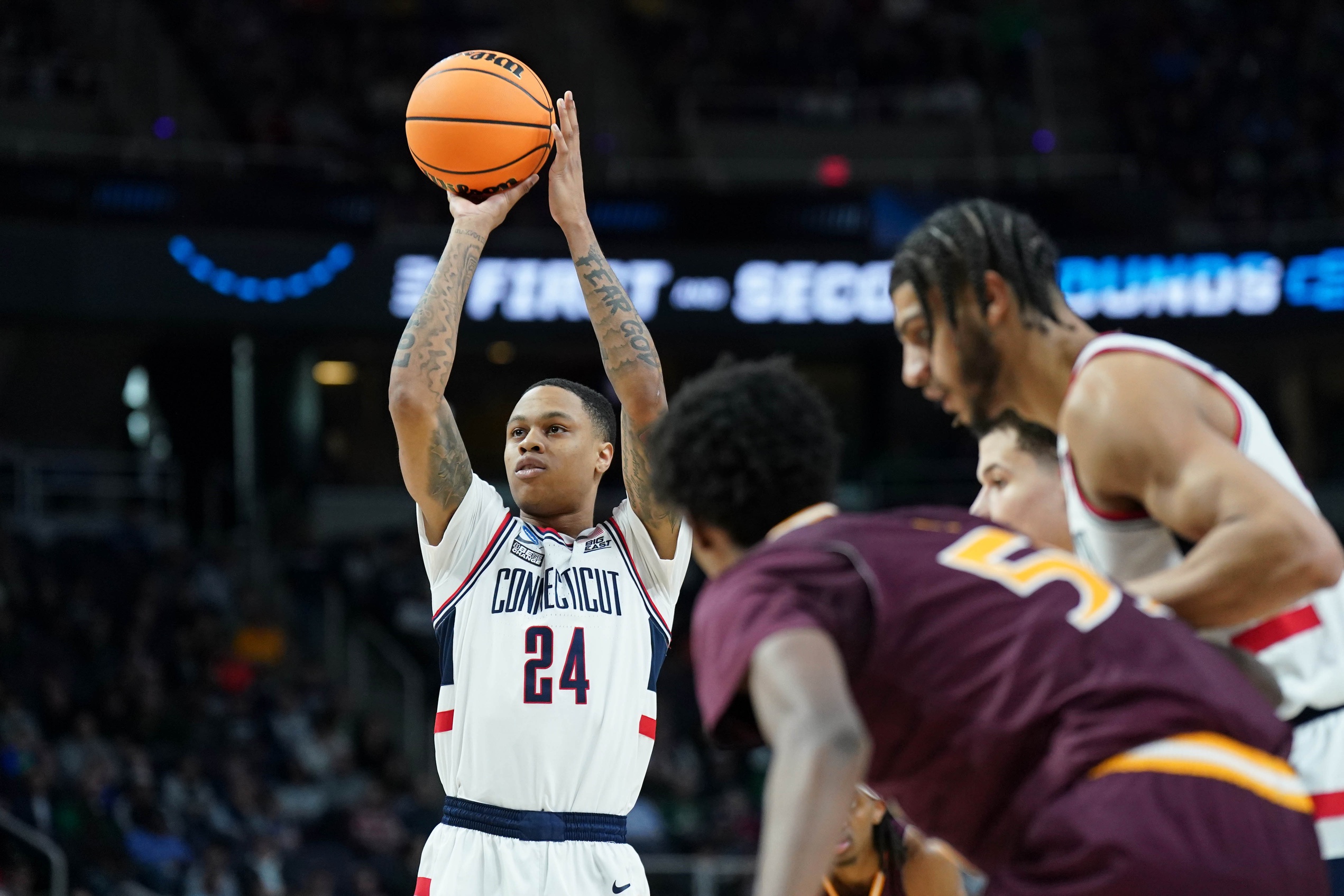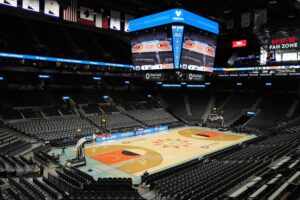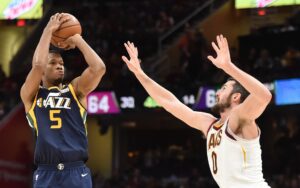The Sweet Sixteen of March Madness is arguably the most exciting round of the entire tournament. Teams that survive this round finally have to be considered to have a legitimate chance to win it all. In other words, it separates the contenders from the pretenders. One common theme amongst contenders every year is their steady guard play. Having a reliable guard to maximize and optimize possessions is crucial for surviving all the uncertainties associated with this tournament. Here are the top five guard prospects remaining in March Madness that front offices should target, assuming they all decide to declare for the NBA draft.
March Madness: Top Five Guard Prospects for NBA Draft
5. Amari Bailey, UCLA
Amari Bailey has filled in nicely in the absence of Senior Jaylen Clark, who has been out with an Achilles injury. He’s significantly raised his draft stock in the past month and should be a borderline first-round pick if he declares for the draft. A pest defensively, Bailey is averaging over one steal a game. His ability to anticipate passes, quick hands, and six-foot-five NBA frame make him a solid defender. UCLA is a top-three defensive team on KenPom, and Bailey contributes to that.
Offensively, some flaws still keep him from being a surefire first-round pick. He is shooting 32 percent from three and 64 percent from the line on the season. However, he’s improved in that department as the season has progressed. As a result, Bailey has an excellent opportunity to improve his draft stock even more in the coming weeks should UCLA continue to make a run.
4. Marcus Sasser, Houston
Marcus Sasser is one of the best players in all of college basketball and a significant reason why Houston is a one-seed in the tournament. On the season, he’s averaging around 17 points, three rebounds, and three assists a game on 44/39/84 shooting splits. Sasser possesses an elite skillset; the only thing keeping him from being higher on this list is his age and height. He’s a six-foot-two Senior that’s 22 years old. Sasser’s room to improve might be more capped than some of the remaining guards on this list that have potential due to their relative lack of experience.
However, many guards in the NBA were drafted later than they should have been because they were upperclassmen. Sometimes the maturity and ability to impact the game right away get overlooked by teams chasing the raw potential of players. Teams in win-now mode should strongly consider Sasser in the first round.
3. Nick Smith Jr., Arkansas
Freshman Nick Smith Jr. will likely project better than his college stats indicate as an NBA prospect. For one, he’s been dealing with a knee injury that has kept him out for more than half the season and likely has affected his stats and play to an extent. On the season, Smith Jr. averages 12.6 points per game on 37 percent shooting from the field, 32 percent from three, and 74 percent from the charity stripe. The eye test suggests he will be a great scorer at the next level and is one of the best-scoring guards in the draft. Smith Jr. earns the number three spot on this list, given his scoring ability and potential as a prospect.
2. Jordan Hawkins, UConn
A Sophmore sharp-shooter, Jordan Hawkins is connecting on 38 percent of his threes and 88 percent of his free throws this season. His shooting ability alone makes him worthy of a first-round draft pick. You can never have enough shooting in the NBA’s style of play. However, Hawkins is a limited playmaker as a guard, which is an area of development for him. He has a one-to-one assist-to-turnover ratio and isn’t relied on to get his teammates involved very often. Still, Hawkins could be a reliable three-point specialist in the NBA. He has the potential for more if he improves other facets of his game.
1. Anthony Black, Arkansas
Another Arkansas Freshman guard comes in at number one. On defense, Anthony Black does a great job of using his six-foot-seven length to disrupt plays, averaging two steals a game. In addition, his height in the NBA is a plus in switching onto bigs better in pick-and-roll situations.
Offensively, Black needs to improve his shooting. He’s shooting around 30 percent from three and 70 percent from the free-throw line. However, he’s still great at getting teammates involved, averaging four assists a game. With the right situation of shooters spacing the floor around him, Black could be an intriguing player. He has the upside to be one of the best players in the upcoming NBA draft class.






